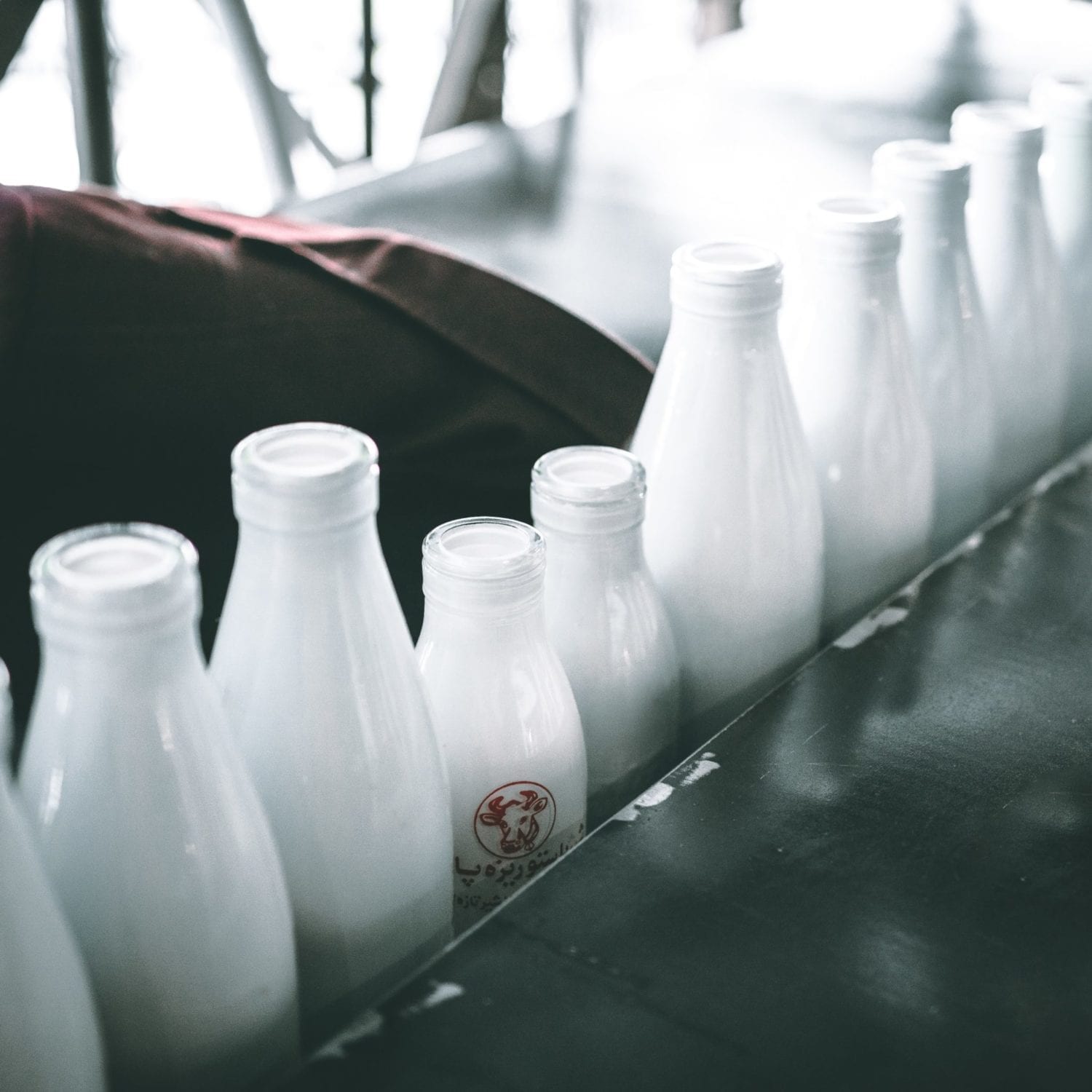Milk drinkers are slowly but solidly moving away from dairy milk in favour of plant-based milk as a healthier, more adequate, ethical and sustainable choice over cow, goat, sheep and buffalo milk.
Yet, because there’s so many choices and plenty debate over which is best, if you are new to this, walking up to the plant-based milk aisle can feel a little daunting. For example: almonds use far too precious water and as for soy there is evidence suggesting that it may be linked to breast cancer, poor thyroid function and interference with male hormones.
So which plant-based milk is healthier and more sustainable than dairy milk?
Dairy is not good for human consumption
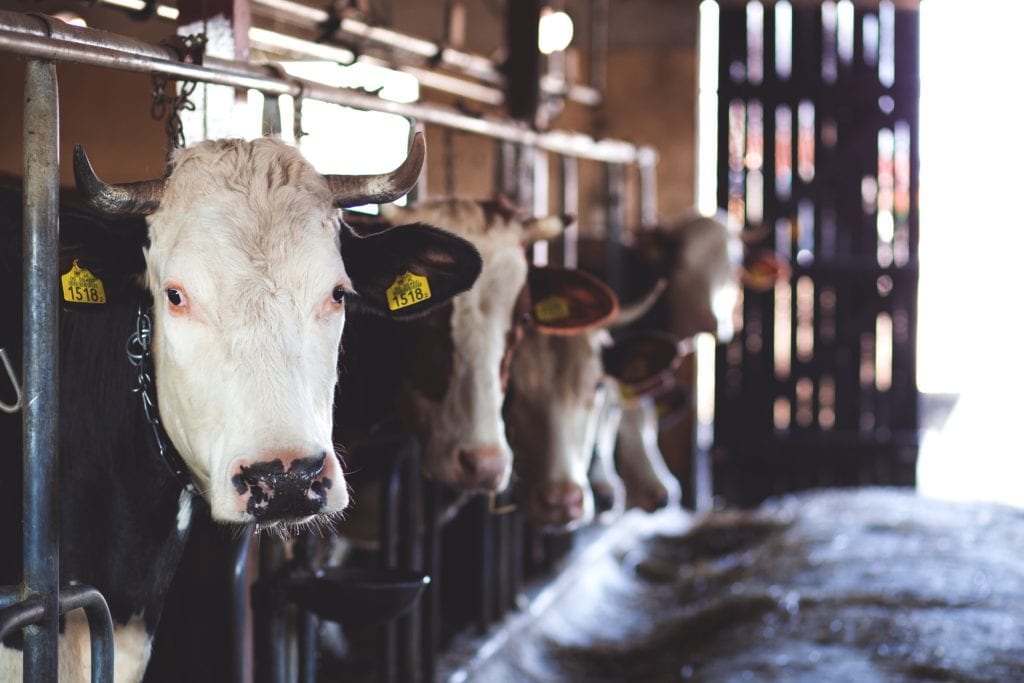
Dairy products are rich in calcium and have been often praised for improving good strong bone health. A big pusher behind the intake of milk is obviously the milk industry that for decades promoted milk as the answer to strong bones. Until, observational studies showed that consuming a lot of milk and other dairy products has little effect on the rate of fractures and that it may actually contribute to problems such as heart disease and prostate cancer. There’s also plenty evidence that dairy foods, which have high saturated fat content, are high contributors to cholesterol and they have been linked to possible increase of ovarian and prostate cancer.
It is also interesting to note that milk is not the only source of calcium! Examples of calcium rich foods are whole wheat products, vegetables from the brassica family, vegetables with dark green leaves, beans and legumes, nuts and seeds, as well as Okra, herbal teas like nettle and red clover and even mineral water.
Further factors to consider when we talk about dairy products is that cows are pumped with lots of antibiotics to keep them alive in often precarious farm condition causing a surge in antibiotic-resistant bacteria.
Studies have also shown that, from an evolutionary point of view, consuming dairy does not make sense as human beings are the only animals that consume dairy after weaning. Furthermore, from other species!
Finally, there is also the very important unethical point of view to face, which sees the farming industry having to continually fertilize cows to produce milk and having to kill their offspring. Cow farming is also a major contributor to water and air pollution as well as deforestation which all lead to climate change.
The truth about dairy products
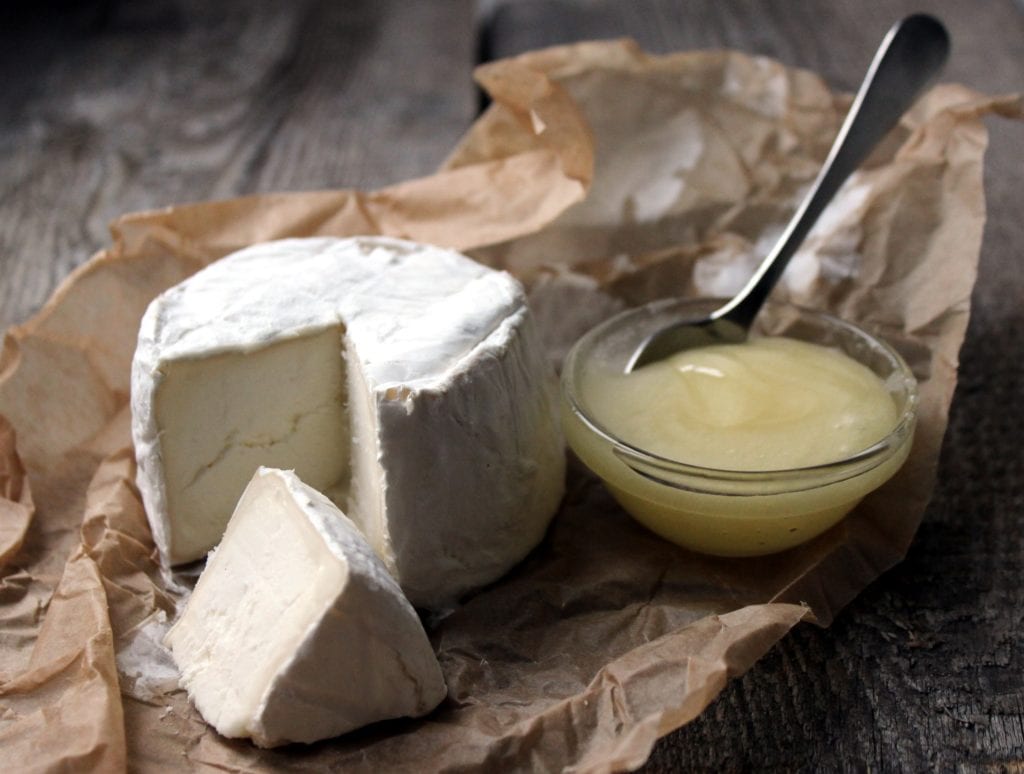
Dairy products are rich in calcium and have been often praised for improving good strong bone health. A big pusher behind the intake of milk is obviously the milk industry that for decades promoted milk as the answer to strong bones. Although some observational studies have shown that increased calcium intake helps prevent osteoporosis, other observational studies have shown that consuming a lot of milk and other dairy products has little effect on the rate of fractures. Not only this but that, rather interestingly, it may actually contribute to problems such as heart disease and prostate cancer. There’s plenty evidence that dairy foods, which have high saturated fat content, are high contributors to cholesterol and they have been linked to possible increase of ovarian and prostate cancer.
What research shows is that as for Osteoporosis it can be slowed down by getting regular exercise, ensuring that we have a good intake of vitamin D (either by responsibly exposing to the sun or by taking supplements), consuming an adequate amount of Vitamin K (found in green leafy vegetables), not getting too much preformed vitamin A and ensuring we consume enough calcium to reduce the amount the body has to borrow from bone.
Also interestingly is that milk is not the only source of calcium. Examples of calcium rich foods are whole wheat products, vegetables from the brassica family (like broccoli, kale and cabbage), vegetables with dark green leaves (such as turnip greens, dandelion greens, mustard greens and beet greens), beans and legumes, nuts and seeds, as well as Okra, herbal teas like nettle and red clover and even mineral water.
There are also other factors to consider when we talk about dairy products. Cows are pumped with lots of antibiotics to keep them alive in often precarious farm condition causing a surge in antibiotic-resistant bacteria. Studies have also shown that, from an evolutionary point of view, consuming dairy does not make sense as human beings are the only animals that consume dairy after weaning. Furthermore, from other species! This is a rather important point, because it’s worth mentioning that cow’s milk is suited to the nutritional needs of calves, who have four stomachs and gain hundreds of pounds in a matter of months. Not so good full gown human beings.
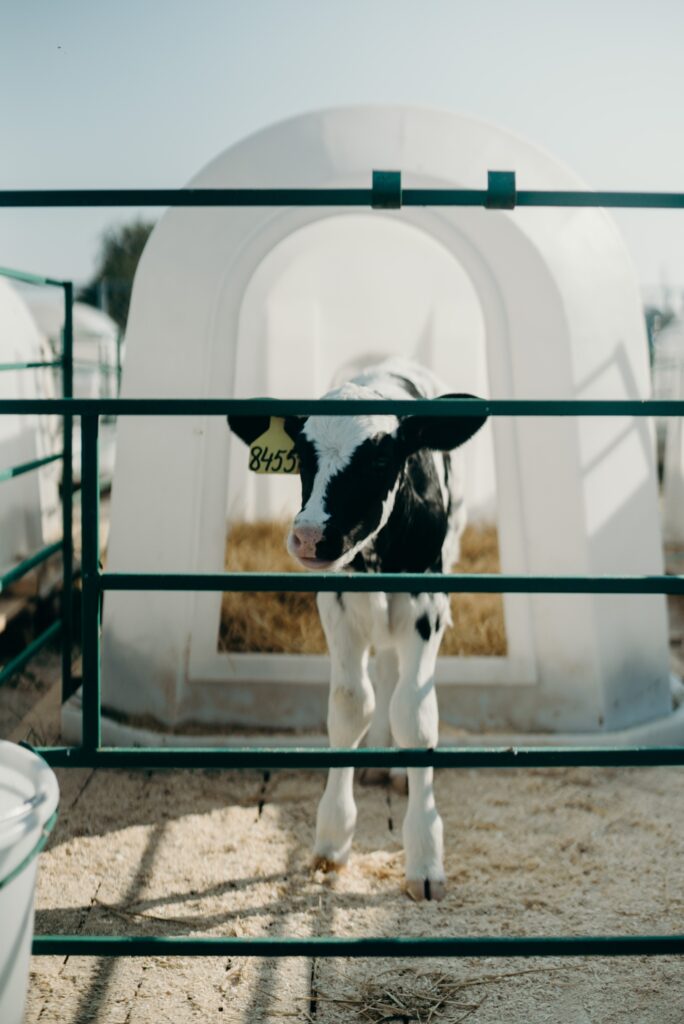
There is also the very important unethical point of view to face.
Many people believe that cows produce milk at will. As if there is a never-ending flow of milk that appears from a cow’s udder, ready to be taken by humans and put into bottles to be poured onto our breakfast cereal. But this is a common misconception. And it’s not just by chance that people believe it or have never questioned it. In fact, it’s the result of decades of advertising by the dairy industry which wants us to believe in a story that bears no resemblance to reality. Cows produce milk because they have given birth. Just like humans, a cow only produces milk for her baby. This means that all cows used for their milk in the dairy industry are mothers. But the mother cow doesn’t become pregnant by accident. In fact, the inception of her baby is as unnatural as it gets.
Here a few facts and things to think about:
- The farming industry is having to continually fertilize cows to produce milk.
This means their offspring are either taken away or killed as their milk is needed for human consumption.
- Male calves born in the dairy industry are sent to slaughter.
Male calves cannot produce milk and are therefore considered useless to the dairy industry. According to a 2020 report, every year in the UK an estimated 60,000 male calves – approximately 15% of all male calves born in the dairy industry – were shot on-farm. This brutal practice has been defined by many as ‘dairy’s dirty secret’ and has long been criticized by animal protection organisations and the general public.
- The dairy industry slaughters pregnant cows.
The slaughter of pregnant cows is something so shocking that most people struggle to believe that it is allowed by UK law. Thousands of cows are killed every year in the UK while they’re carrying their babies. Shockingly, some of them are in the last stage of their pregnancies, meaning their calves can suffer during and for a few minutes after the slaughter.
- Cows in the dairy industry are killed for cheap meat.
The unnatural milk production, combined with repeated forced pregnancies, takes a toll on their bodies. By the time they are a few years old, they are seen as ‘unproductive’ – because they’re so exhausted and their milk production has declined. They are no longer considered profitable to the industry. At this point they are sent to slaughter and sold for cheap meat and leather products.
- 25% of cows in the UK dairy industry suffer from lameness.
Cows in the dairy industry suffer throughout their entire lives. From the moment they are born they are torn away from their mothers and confined alone until they are old enough to be artificially impregnated over and over again in order to keep producing milk. This draining cycle of pregnancies, births and milk production is extremely hard on them, which is why they often develop severe diseases or physical ailments. Many die from these diseases or are killed as a result. Some of the most common health problems that cows develop are metabolic starvation, mastitis and lameness.
- Many cows in the dairy industry will never see a pasture.
Some cows in the UK are kept in tie-stalls, where – because of the extremely limited space provided – they are tethered by a chain, metal bars or ropes tied around their neck. A cow can be chained for up to 24 hours per day without being able to move or even turn around.
Finally, especially in view of recent climate change events, it is important to acknowledge that factory farming is a major contributor to water and air pollution as well as deforestation which all lead to climate change.
Based on the above evidence, it’s worth considering a switch to a common plant milk such as almond, coconut, rice, soy, hemp, oat, pea, and peanut milk as a more adequate, ethical and sustainable choice over cow, goat, sheep and buffalo milk.
Again, ethical reasons aside, it is important to be aware that the consumption of calcium is definitely not just milk related.
A look at milk alternatives

You don’t need to go far today to find some kind of plant-based milk. Soy and rice milk are no longer confined to the dusty shelves of health food stores, and other substitutes like oat, coconut and even hemp milk are now widespread in coffee shops and supermarket aisles.
There are plenty plant-based alternatives out there, and here are just a few:
- Soy Milk
- Almond Milk
- Coconut Milk
- Oat Milk
- Rice Milk
- Cashew Milk
- Hemp milk
- Pea milk
- Peanut milk
- Macadamia Milk
It is estimated that by switching from dairy to soya milk we could save about 250 km³ of irrigation water a year. To put it into prospective, that is the same as if everyone globally stopped having showers or baths for a whole year! Furthermore, in terms of greenhouse gas emissions we could reduce those by almost one billion tonnes a year, which is the equivalent of Germany’s total emission in a year!
Impressive, right?
Plant alternatives and their environmental costs

Joseph Poore, a researcher at the University of Oxford, published a study in 2018 which looked at the environmental footprint of some food and drink. Later he extended the analysis to include plant-based milks, looking at the impact of soy, oat, rice, and almond milk on the environment. He found that all of those plant milks fared better than cow’s milk.
Although the production of dairy milk is far more damaging for the planet, plant-based milk alternatives also have environmental costs.
Almonds, for example, need a lot of water to grow and the world we live in today is only just starting to see the effects of water shortages! Ironically and controversially, most of the world’s almond production is in California, which is also under a huge pressure on water resources – or lack of it!
Let’s move on to rice milk. A lot of people associate methane with cows and burping but actually the bacteria living in the soil underneath flooded rice paddies also gives off methane as part of their respiration process. Yes, it’s a lot less than cows, but still slightly more than other milk alternatives.
So, what about oats milk? Oats can grow in a lot of climates and can even thrive in the more British temperatures. The problem is that it does have a slightly higher land use than any other plant alternatives.
The main point here is that if you look for reasons to discharge any, you will find them. But dairy production is so environmentally damaging that switching to any of the plant-based alternatives will be better for the planet’s health…and as we saw earlier, for us too!
So, it’s not really a question of ‘which should you switch to?’ but rather a question of ‘when are you going to switch?’ – full stop.
How do plant-based milks compare to cow’s milk nutritionally?
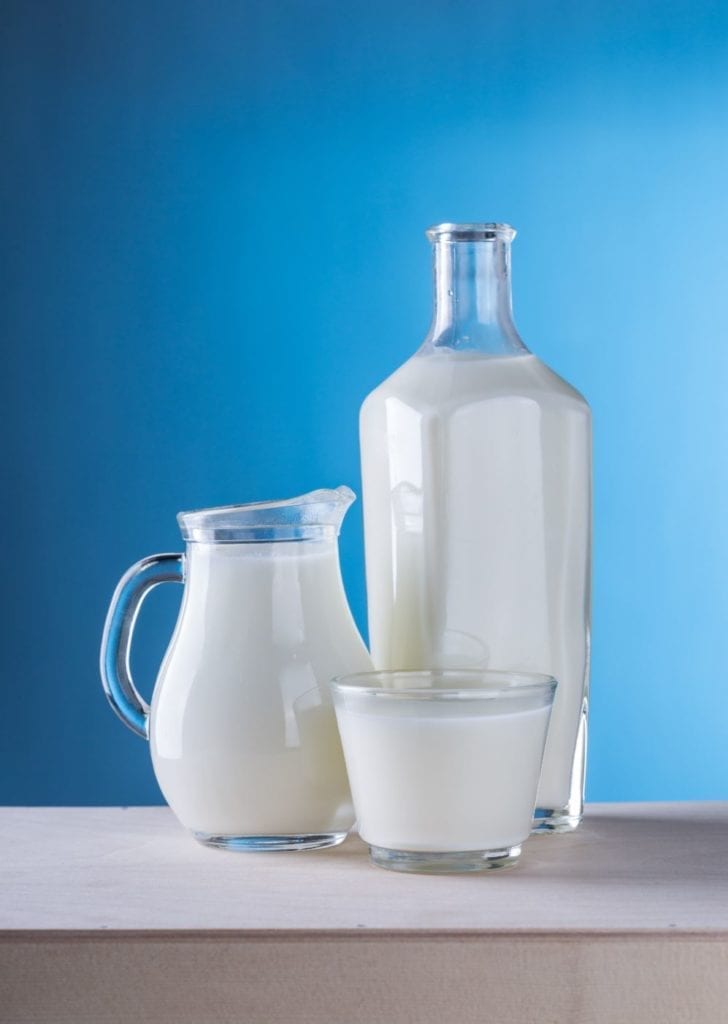
Of course, the environmental impact is only part of the equation when deciding which plant-based milk to switch to. When deciding which milk type to use we also have to consider its nutritional values. So how do plant-based milks compare to cow’s milk nutritionally?
From a nutritional point of view, if you use milk simply for your teas and coffees, then it really does not matter because the macro and micronutrients quantities you use are far too small to matter. However, if you’re looking to replace a large part of your diet, or your child’s diet, it’s something you’ll want to look at more closely.
Dairy milk contains several nutrients such as calcium, protein, iodine, potassium, phosphorus and vitamins B2 and B12.
Perhaps the ones that stands out the most are calcium, protein and vitamins B2 and B12, so let’s take a look.
~ Calcium ~
As seen earlier, calcium intake is far better when absorbed by other plant-based options such as vegetables, beans, legumes, nuts and seeds. So that’s done and dusted!
~ Protein ~
In terms of protein, soy milk is the only one that really compares. Its protein levels are comparable with dairy milk, with 3.4g per 100ml for soy versus 3.5g per 100ml of cow’s milk, on average. Other plant-based milks like almond, rice and coconut contain much less protein compared to soy, whereas relative newcomers hazelnut, hemp and oat milk tend to sit somewhere in between.
However, not all protein in food is created equal. A number known as the digestible indispensable amino acid score (DIAAS) indicates the quality of a protein based on its amino acids – the building blocks of proteins – and how well humans digest them. Cow’s milk has a higher protein quality score than soy, but only slightly. The protein quality in other plant-based milks tends to be lower.
Sarita Singhal, a paediatric gastroenterologist at Connecticut Children’s Medical Centre and assistant professor of paediatrics at the University of Connecticut, in 2017 published a study comparing various plant-based milk alternatives to cow’s milk. Singhal became interested in the nutritional side of non-dairy milks when she realised some of her patients and their families were making the switch to milk alternatives without thinking through the potential health consequences. The data she collected led to conclude that, based on the study, soy milk is the best substitute for cow’s milk out of the non-dairy beverages.
However, there is another very important factor to consider here: over complicating things can, once again, make us find faults with everything. It’s important to remember that there’s a lot of protein-rich fruits and vegetables out there as nutritious alternatives to meat, milk and eggs. These, for examples, are just a few:
- Avocado
- Broccoli
- Lentils
- Apricots
- Spinach
- Edamame
- Many varieties of beans
- Green peas
- Quinoa
- Wild rice
- Pistachios
- Almonds
- Brussels sprouts
- Chia seeds
- Yellow sweet corn
- Potatoes
- Asparagus
- Broccoli
~ Vitamins B2 and B12 ~
In terms of vitamin B12, it is naturally found in animal products, including fish, meat, poultry, eggs, milk and milk products. However, although vitamin B12 is generally not present in plant foods, there’s lots of fortified foods on the market such as non-dairy milks, breakfast cereals, spreads and nutritional yeast flakes.
As for vitamin B2, or riboflavin, it can be found in grains, plants and dairy products.
The verdict

As we have seen, there’s many reasons why dairy products are not good for human consumption and dairy production is so environmentally damaging that switching to any of the plant-based alternatives will be better for us as well as the planet.
Choosing your plant-based milk substitute will largely come down to individual circumstances. If you want to get a decent amount of protein from your milk you might choose soy. If you’re not getting enough vitamin B12 elsewhere in your diet, it might make sense to opt for something fortified to up your intake.
But, however we look at it, it is very important to understand that by eating a varied diet rich in fresh fruits and vegetables you will provide your body with all the nutrients it needs. That is why, if you are generally healthy and fit and you are not affected by any particular condition, at Wellness & Purpose we advise not fixating on the individual nutrients. Food should instead always be considered in its complexity because the various nutrients in foods interact with each other and they behave very differently when isolated.
So, the question is: when are you switching to a plant-based milk?


